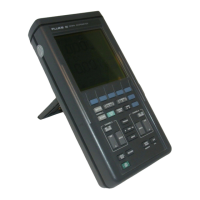CIRCUIT DESCRIPTIONS 3-
13
-
Display
control signals LINECL, DATACL, M, frame
These slQTials are
used to control the LCD. The LCD picture is
constructed from these display control
signals
and the data signals and sent to the LCD via the LCD
outputs.
DATACL is
the clock signal, used to clock the data D0...D3
Into the driver buffer.
LINECL is a clock signal, used to clock
one complete line (column) Into the LCD.
The M signal is described f urtheron
(see
M-randomize
section)
.
LCD suppiy sectfon
*nte
pulse
modulated signal, CONTRAST, comes from
the D-ASIC. CONTRAST Is filtered by R1401
and Cl 401
to get a DC voltage. The value of this DC voltage depends
on the duty cycle o1
CONTRAST signal.
Opamps N1401 convert the DC signal Into stabilized
DC voltages VI...V6. If the
signal, LCDPWR, coming
from the D-ASIC, Is "high" (+5V). the -20V voltage
is generated and the
system is active.
The -20V supply voltage is temperature corrected
to compensate for the
temperature
dependency of the LCD (-80 mV/C). The LCD
supply
voltages
have to be corrected by
the same amount to get a constant (over
a
temperature
range) brightness and contrast of the LCD.
This
temperature compensation is made by Positive
Temperature Coefficient (PTC) R1418. The -20V
voltage Is made out of the -30V voltage, coming
from the analog A2 PCB. Transistors VI 404 and
VI
402
form
a protection circuit, that limits the current
in
case
the -20V voltage is short circuited.
M-randomi2e sectfon
The signal
M ("LCD backplane modulation') has a time relation with the display
control signals
LINECL and DATACL. The
M-randomize section converts M Into Ml
,
which
is no longer time related
to the other display
control signals. The M1 signal Is used by the LCD drivers
to convert all DC
voltages into
AC voltages, able to drive the LCD.
Depending on the type (brand) of LCD mounted, integrated circuits
DUOS, 01409 and D1410 or
D1411
are used.
Backlight circuitry
The backlight circuitry is
based on the Hartley oscillator principle. Components VI
307. T1301, and
Cl 302 form the oscillator. Transistor VI 304
supplies current to the circuit. This transistor is switched
orVoff by the ON C^F signal, coming from
dne microprocessor. When the output voltage across the
backlight becomes higher than 100V, tran^slorV1305
will be driven open via VI
308,
VI
309,
and
VI 311 . This wll draw
a\vay
current
(energy) supplied to the oscillating circuit (feedback regulation).

